Boyle's Law Problems Worksheet
Are you a student or teacher working with the subject of Boyle's Law? If so, you might find this Boyle's Law Problems Worksheet to be a valuable resource. This worksheet is designed to help reinforce the concepts and calculations involved in Boyle's Law, which relates the pressure and volume of a gas. Whether you are studying for an exam or searching for additional practice problems, this worksheet offers a collection of exercises that are sure to enhance your understanding of Boyle's Law.
Table of Images 👆
More Other Worksheets
Kindergarten Worksheet My RoomSpanish Verb Worksheets
Cooking Vocabulary Worksheet
DNA Code Worksheet
Meiosis Worksheet Answer Key
Art Handouts and Worksheets
7 Elements of Art Worksheets
All Amendment Worksheet
Symmetry Art Worksheets
Daily Meal Planning Worksheet
What is Boyle's Law?
Boyle's Law states that the pressure of a gas is inversely proportional to its volume, as long as the temperature remains constant. This means that if the volume of a gas decreases, its pressure will increase and vice versa. Mathematically, Boyle's Law can be expressed as P1V1 = P2V2, where P1 and V1 represent the initial pressure and volume of the gas, and P2 and V2 represent the final pressure and volume when changes occur.
Define the variables in Boyle's Law equation.
In Boyle's Law equation, the variable \( P \) represents the pressure of a gas, \( V \) represents the volume of the gas, and \( k \) is a constant. Boyle's Law states that at a constant temperature, the pressure of a gas is inversely proportional to its volume. This relationship can be mathematically expressed as \( P_1V_1 = P_2V_2 \), where the subscripts denote initial and final states of the gas.
How does Boyle's Law describe the relationship between pressure and volume?
Boyle's Law states that the pressure of a gas is inversely proportional to its volume when the temperature is kept constant. This means that as the volume of a gas decreases, the pressure increases, and vice versa. In other words, when one variable (pressure or volume) changes, the other variable changes in the opposite direction to maintain a constant product.
What units are typically used to measure pressure and volume in Boyle's Law calculations?
Pressure is typically measured in atmospheres (atm) or pascals (Pa), while volume is commonly measured in liters (L) or cubic meters (m^3) in Boyle's Law calculations. The relationship between pressure and volume in Boyle's Law states that the product of pressure and volume is constant as long as the temperature remains constant.
If the volume of a gas sample is decreased, what happens to the pressure?
If the volume of a gas sample is decreased while keeping the temperature constant, the pressure of the gas will increase. This relationship is described by Boyle's Law, which states that the pressure of a gas is inversely proportional to its volume when the temperature is held constant. Therefore, as the volume decreases, the gas molecules have less space to move around, leading to more collisions with the walls of the container and an increase in pressure.
How does Boyle's Law apply to a balloon being inflated or deflated?
Boyle's Law states that the pressure of a gas is inversely proportional to its volume, assuming constant temperature. When a balloon is inflated, the volume of the gas inside the balloon increases, causing the pressure to decrease. Conversely, when a balloon is deflated, the volume decreases, leading to an increase in pressure. This principle explains how the size of a balloon changes in response to the amount of air or gas it contains.
Describe an example where Boyle's Law is relevant in everyday life.
One relevant example of Boyle's Law in everyday life is seen in scuba diving. When a scuba diver descends underwater, the pressure increases, causing the volume of air in their scuba tank to decrease according to Boyle's Law. As the diver ascends, the pressure decreases, leading to an increase in the volume of air in the tank. Understanding Boyle's Law is crucial for scuba divers to properly manage their air supply and prevent decompression sickness while exploring underwater environments.
Explain the significance of a constant temperature in Boyle's Law calculations.
In Boyle's Law, which describes the relationship between pressure and volume of a gas at a constant temperature, keeping the temperature constant is crucial because it ensures that only the pressure and volume variables are influencing each other. If the temperature were to change, it would also affect the kinetic energy of the gas molecules and thus the average speed at which they collide with the container walls, leading to unpredictable and inaccurate results in the pressure-volume relationship. By maintaining a constant temperature, Boyle's Law calculations can accurately show how changes in pressure and volume are directly proportional to each other.
How can Boyle's Law be used to calculate an unknown variable in a gas sample?
Boyle's Law states that the pressure of a gas is inversely proportional to its volume when the temperature and amount of gas are held constant. This relationship can be expressed as P1V1 = P2V2, where P1 and V1 are initial pressure and volume, and P2 and V2 are final pressure and volume. By rearranging this equation, one can calculate an unknown variable, such as pressure or volume, when the other variables are known. This allows for the manipulation of pressure and volume to determine changes in gas properties within a sample.
What are the limitations or assumptions made in Boyle's Law?
One limitation of Boyle's Law is that it assumes the temperature and amount of gas are constant. It also assumes that the gas behaves ideally, meaning there are no intermolecular forces or other interactions between gas particles. Additionally, Boyle's Law assumes that the volume of the gas is the only variable being changed, without considering other factors that could influence the pressure of the gas.
Have something to share?
Who is Worksheeto?
At Worksheeto, we are committed to delivering an extensive and varied portfolio of superior quality worksheets, designed to address the educational demands of students, educators, and parents.





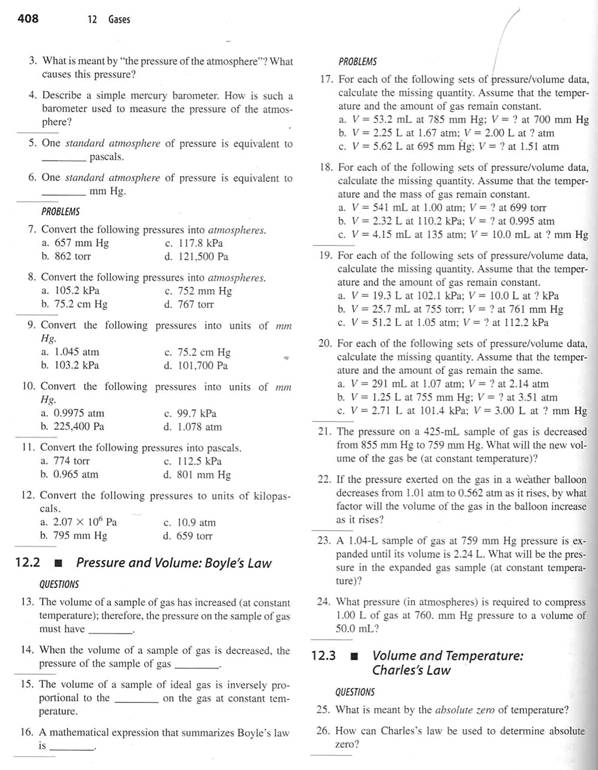
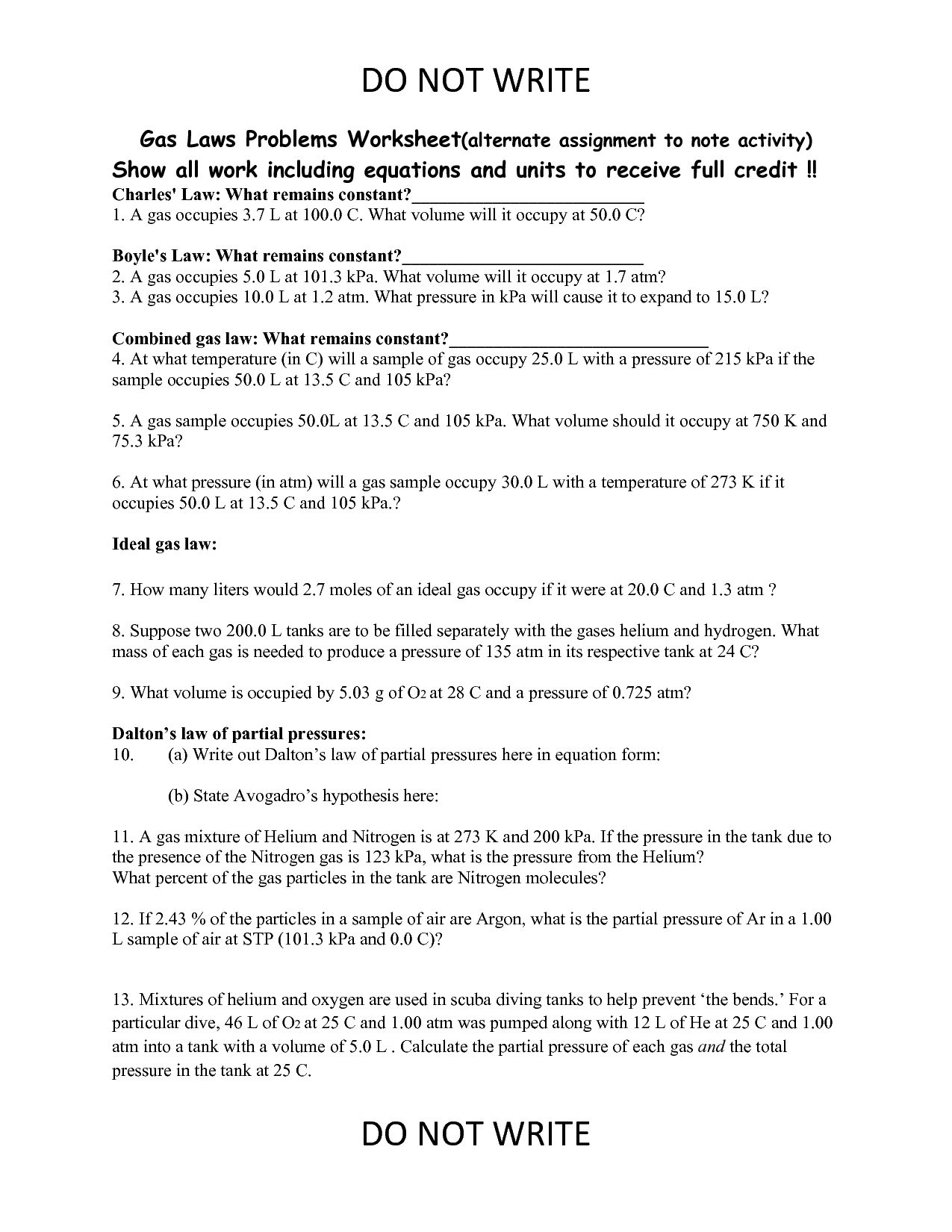
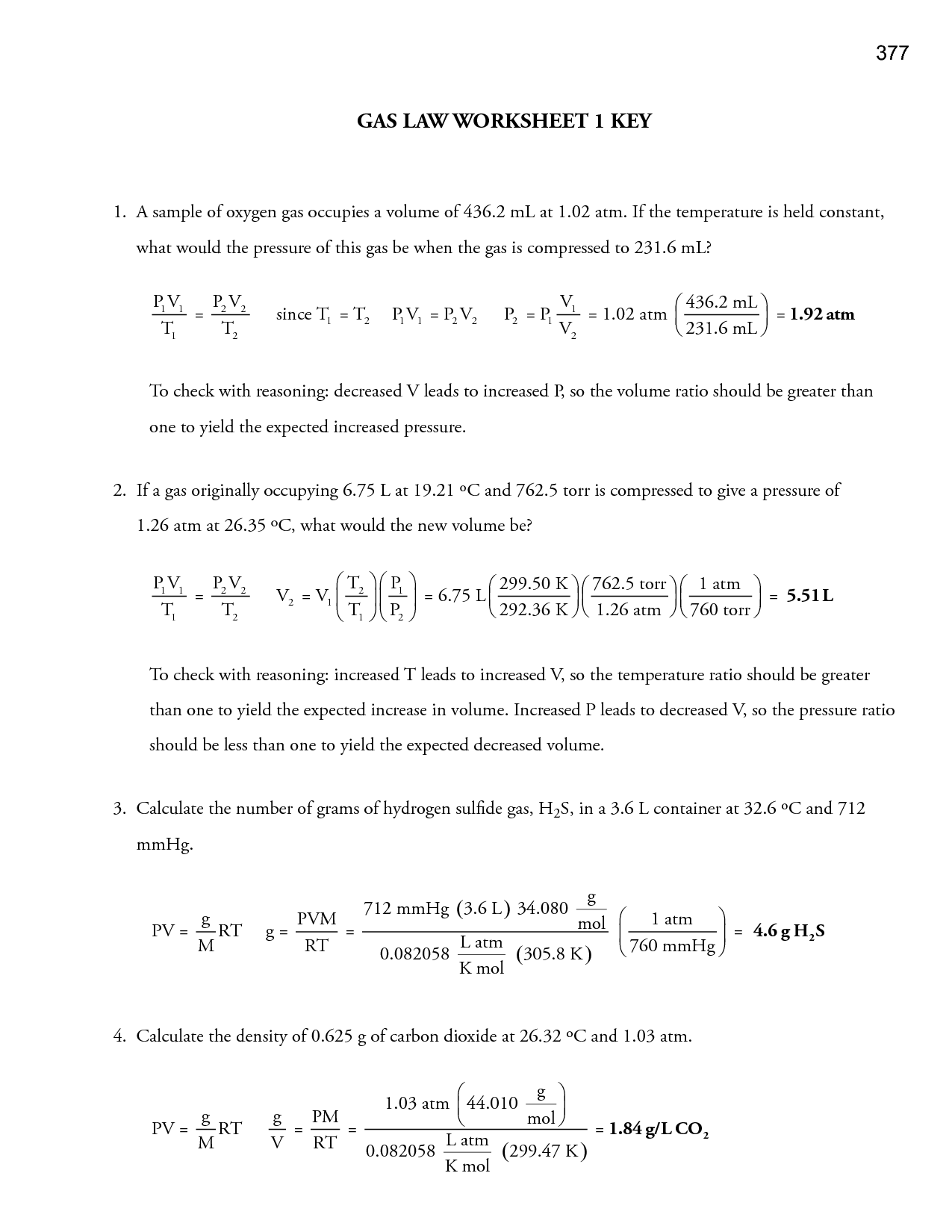
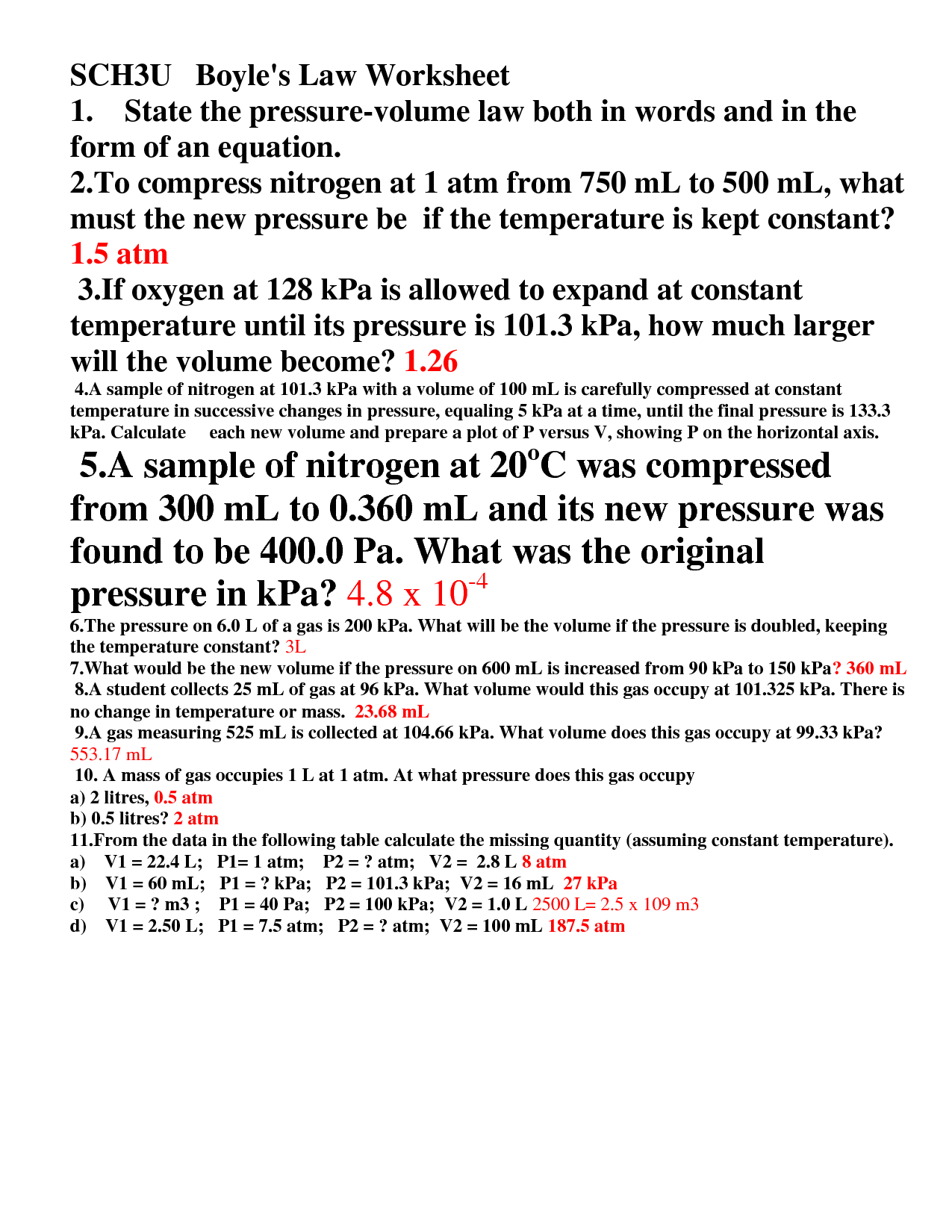
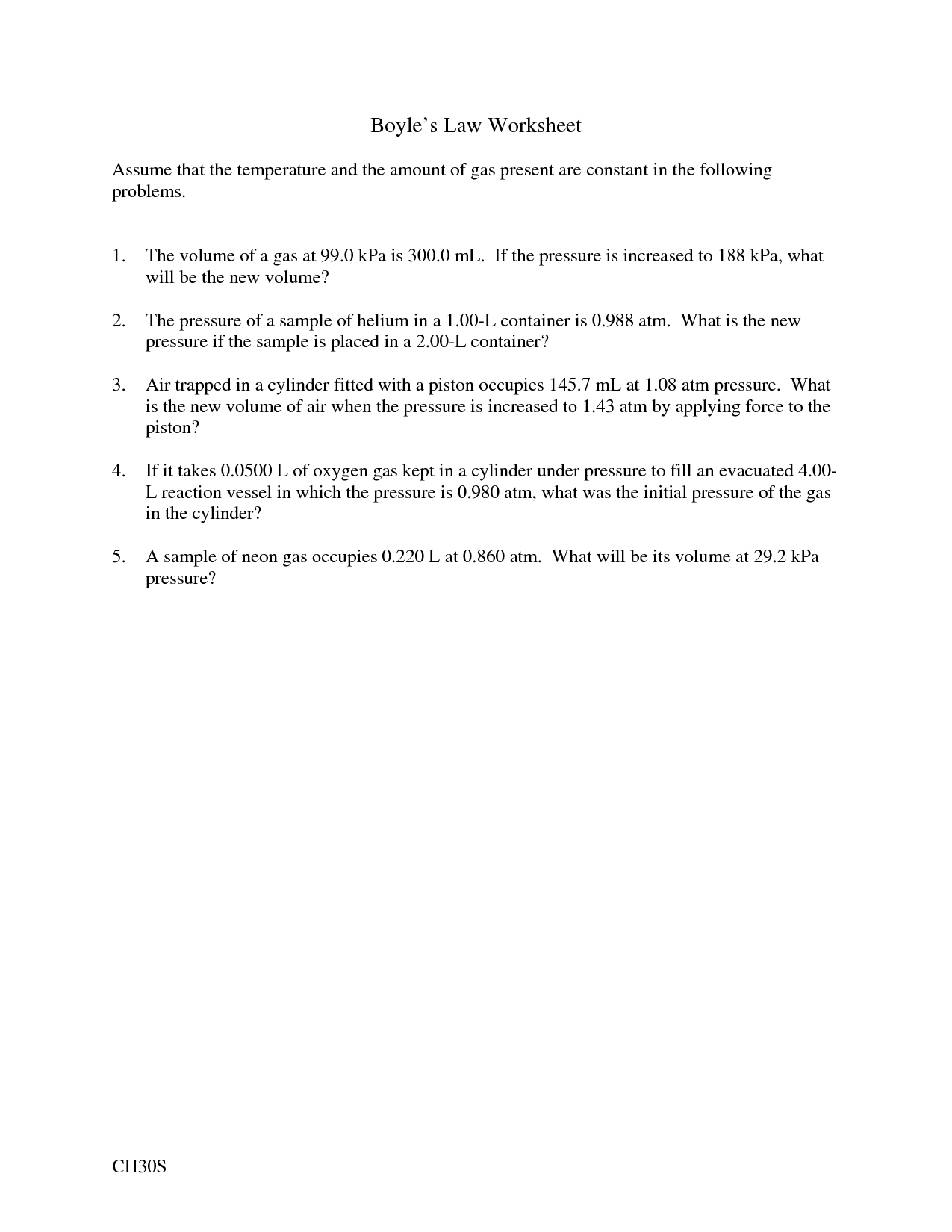
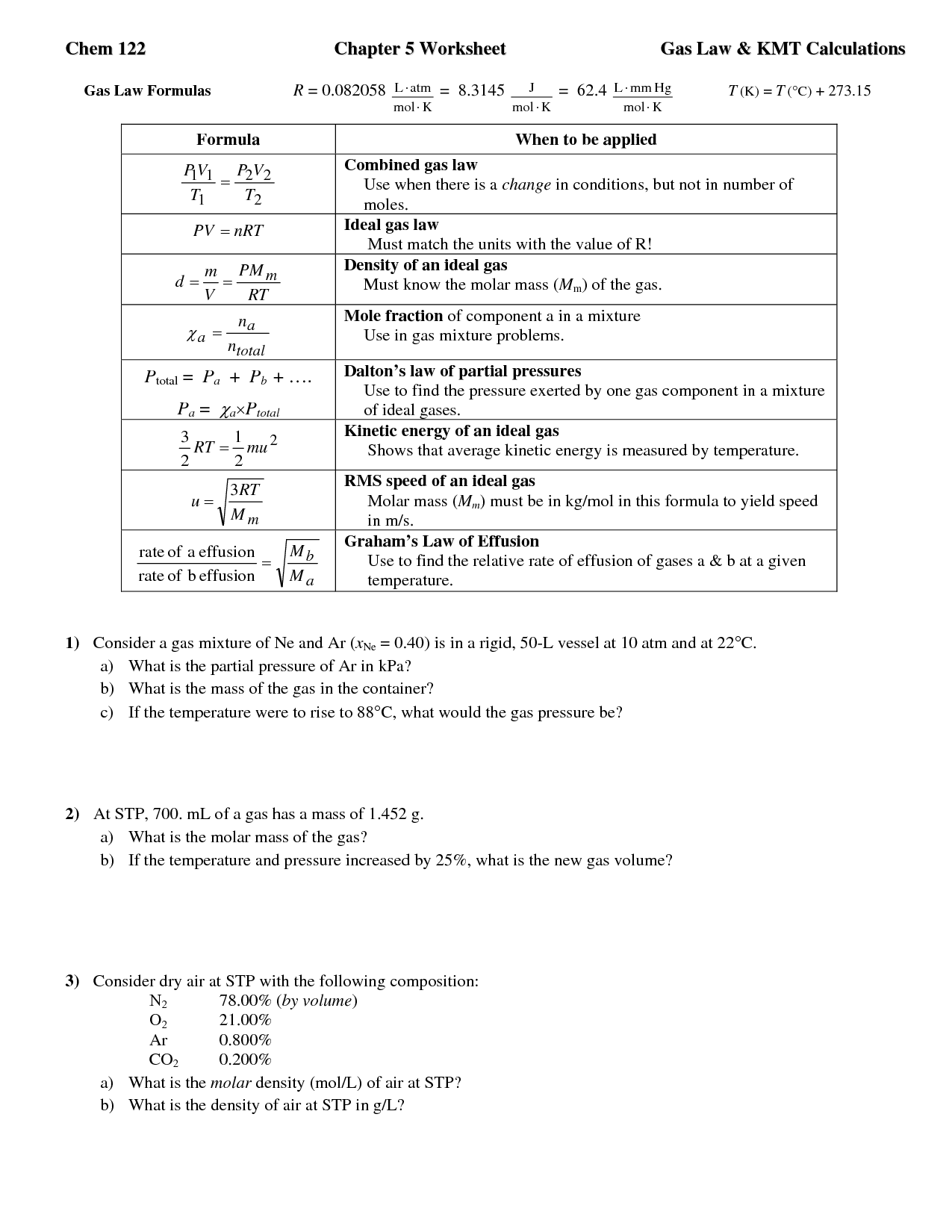
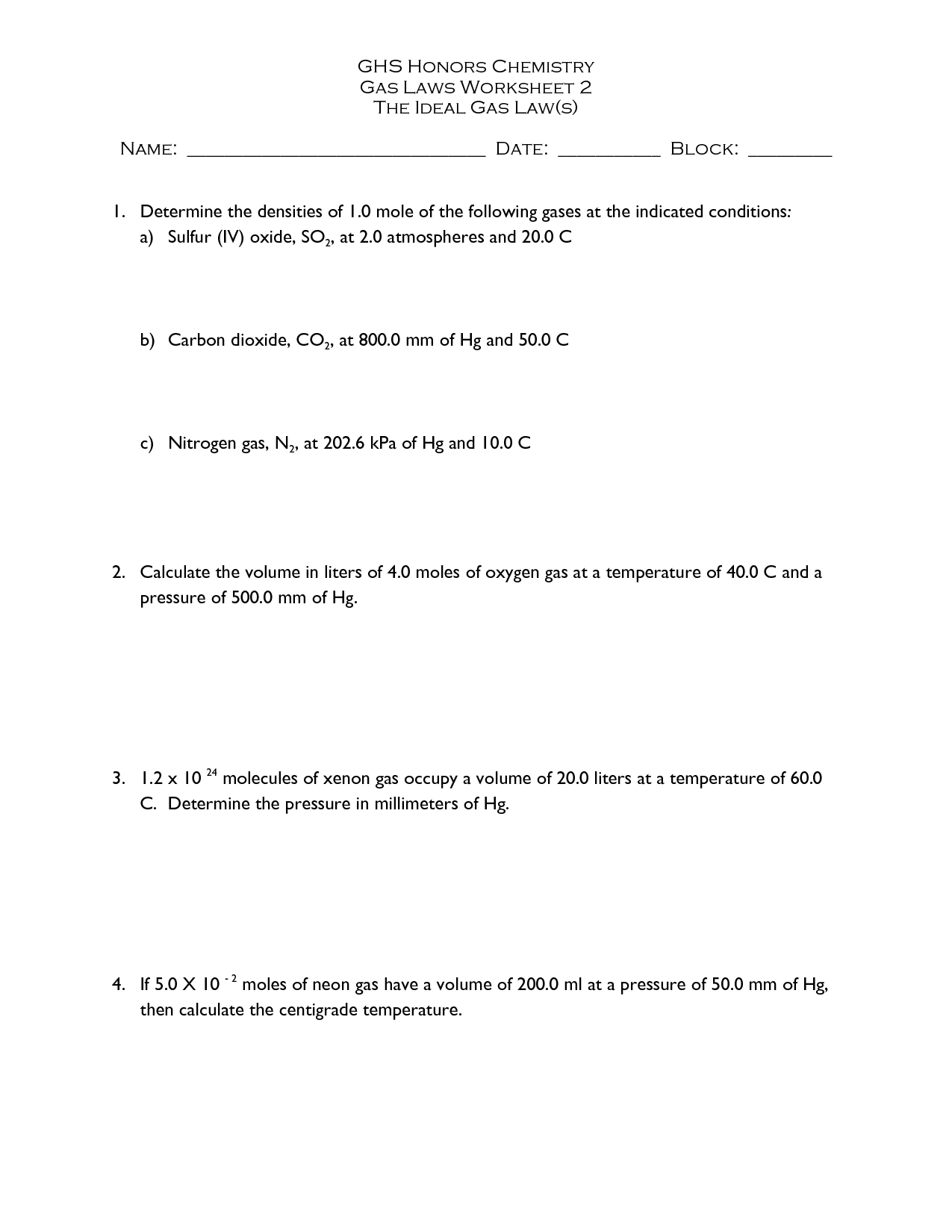
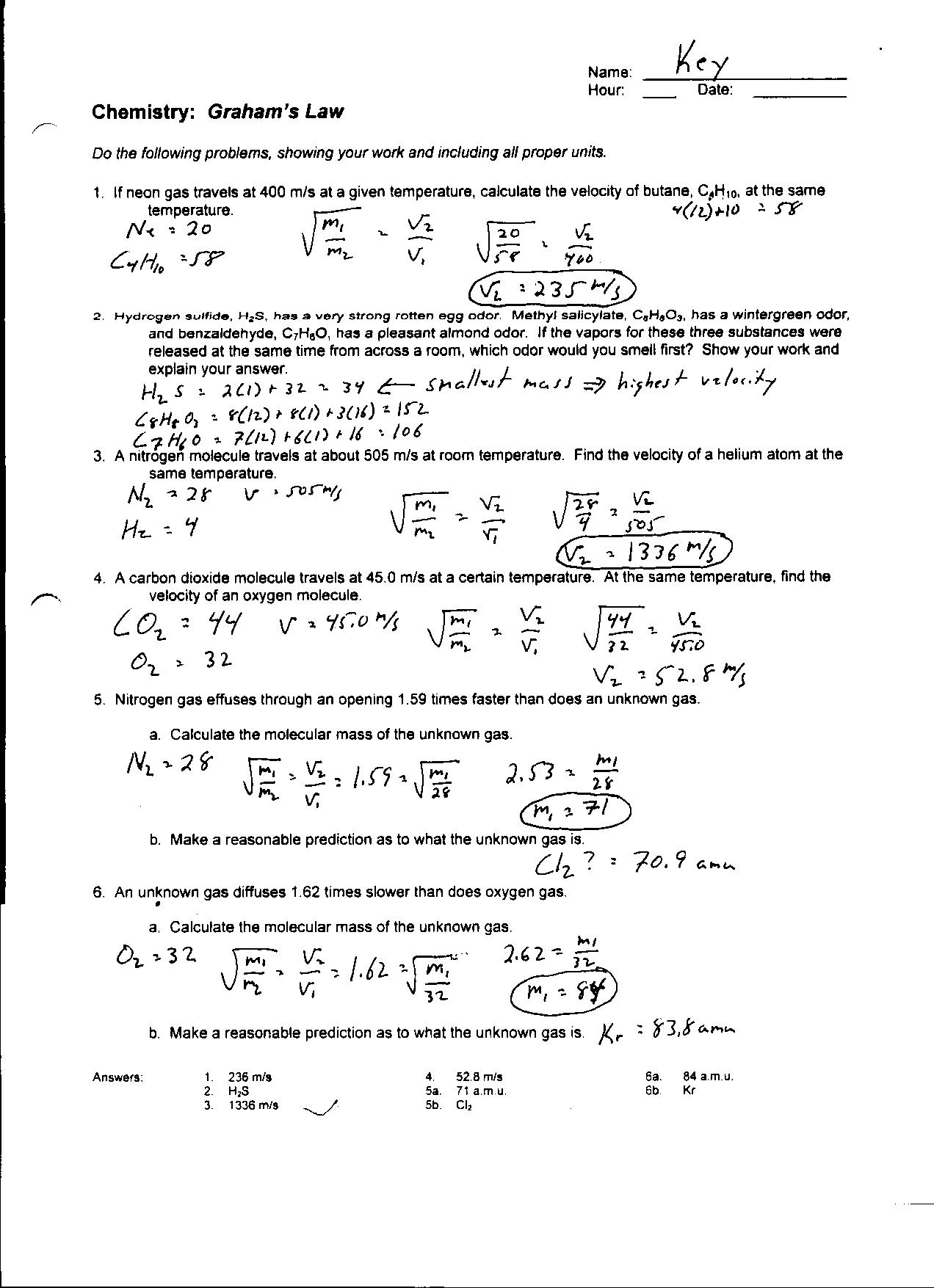
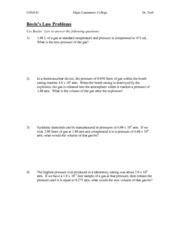
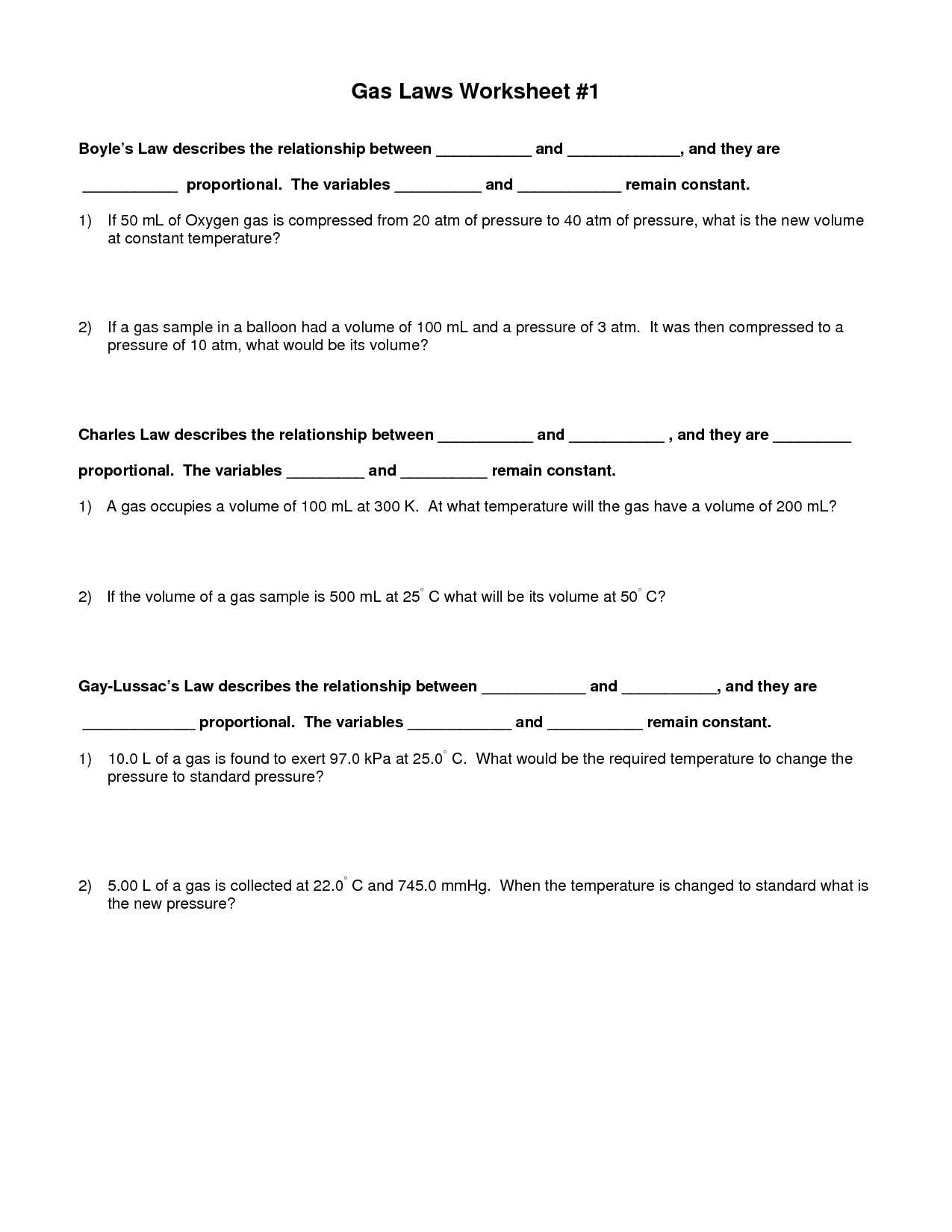

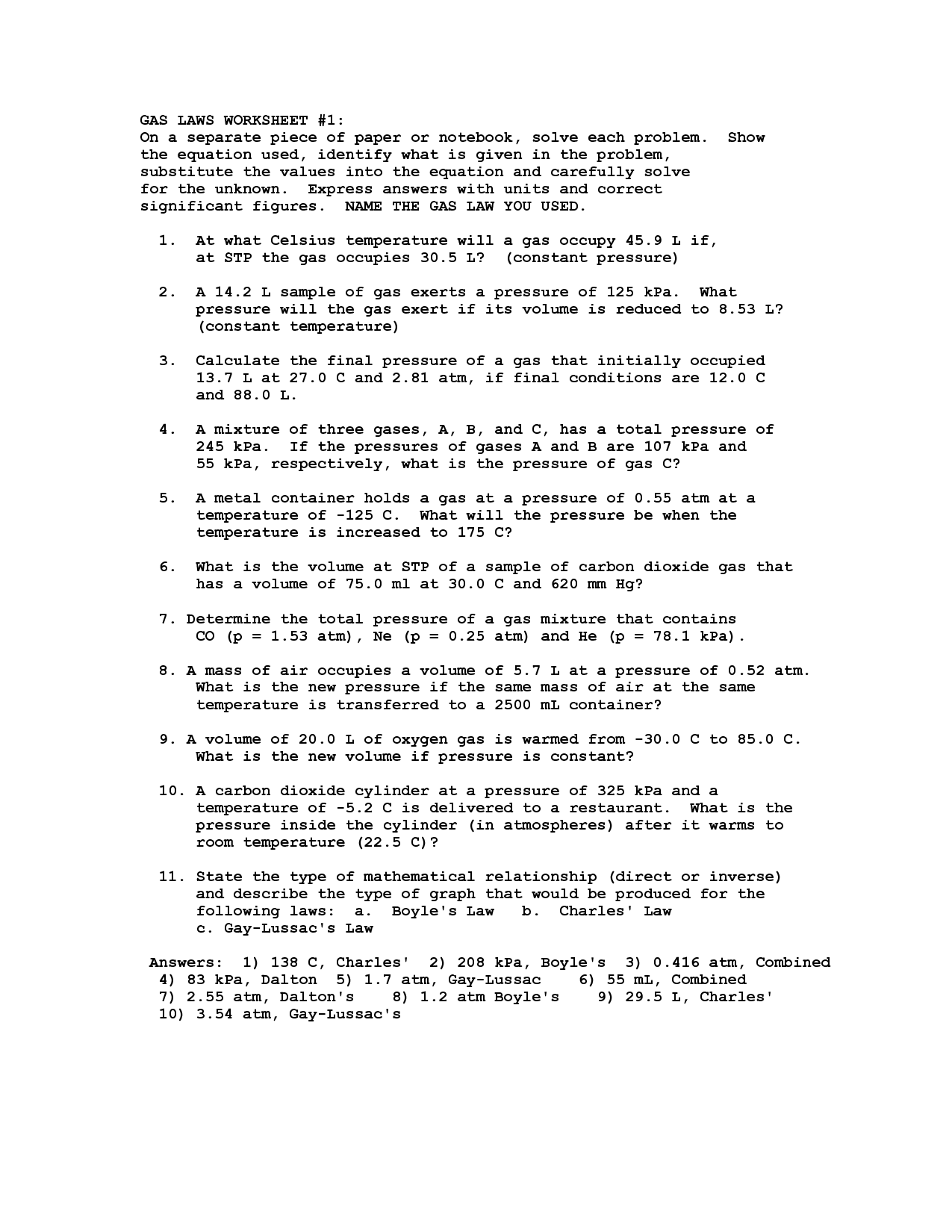
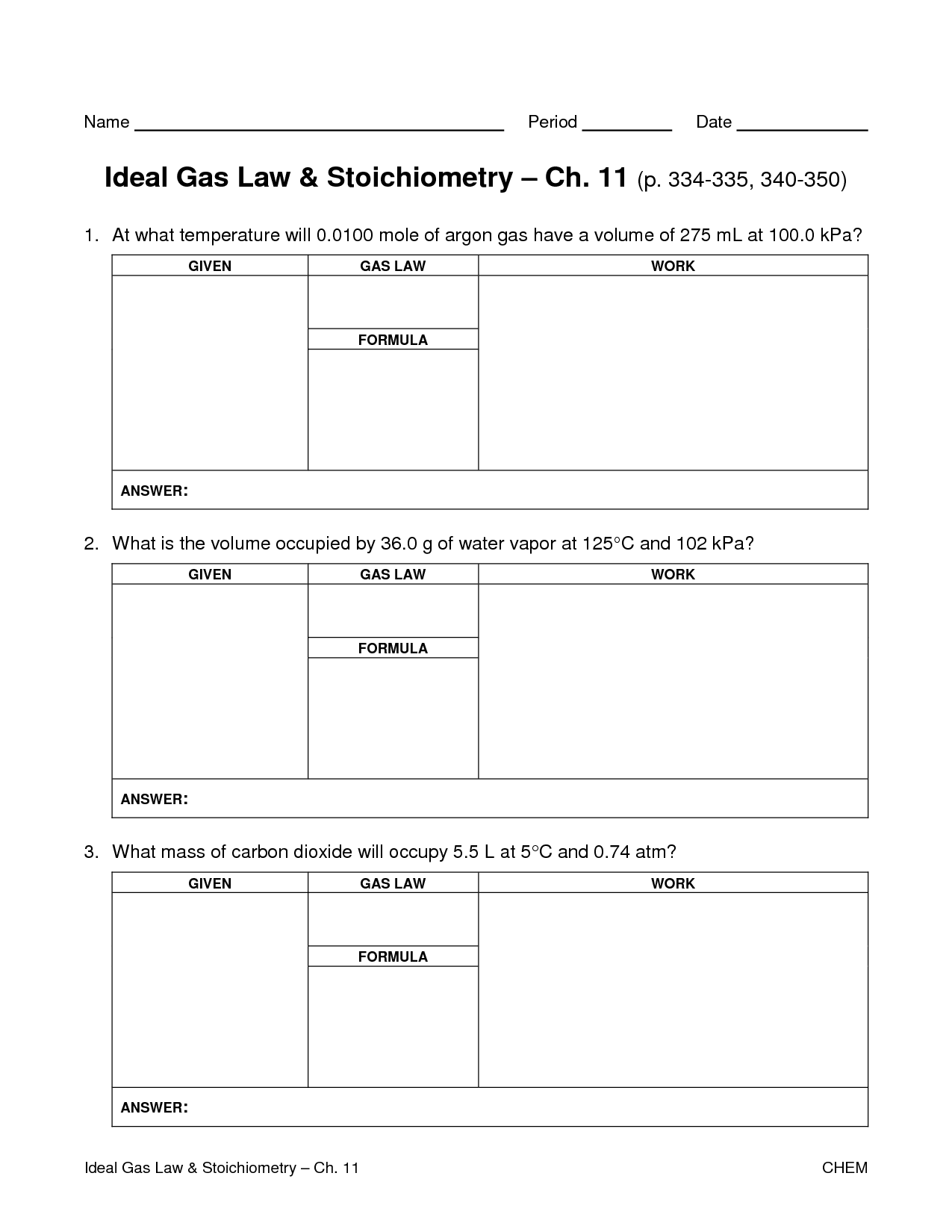
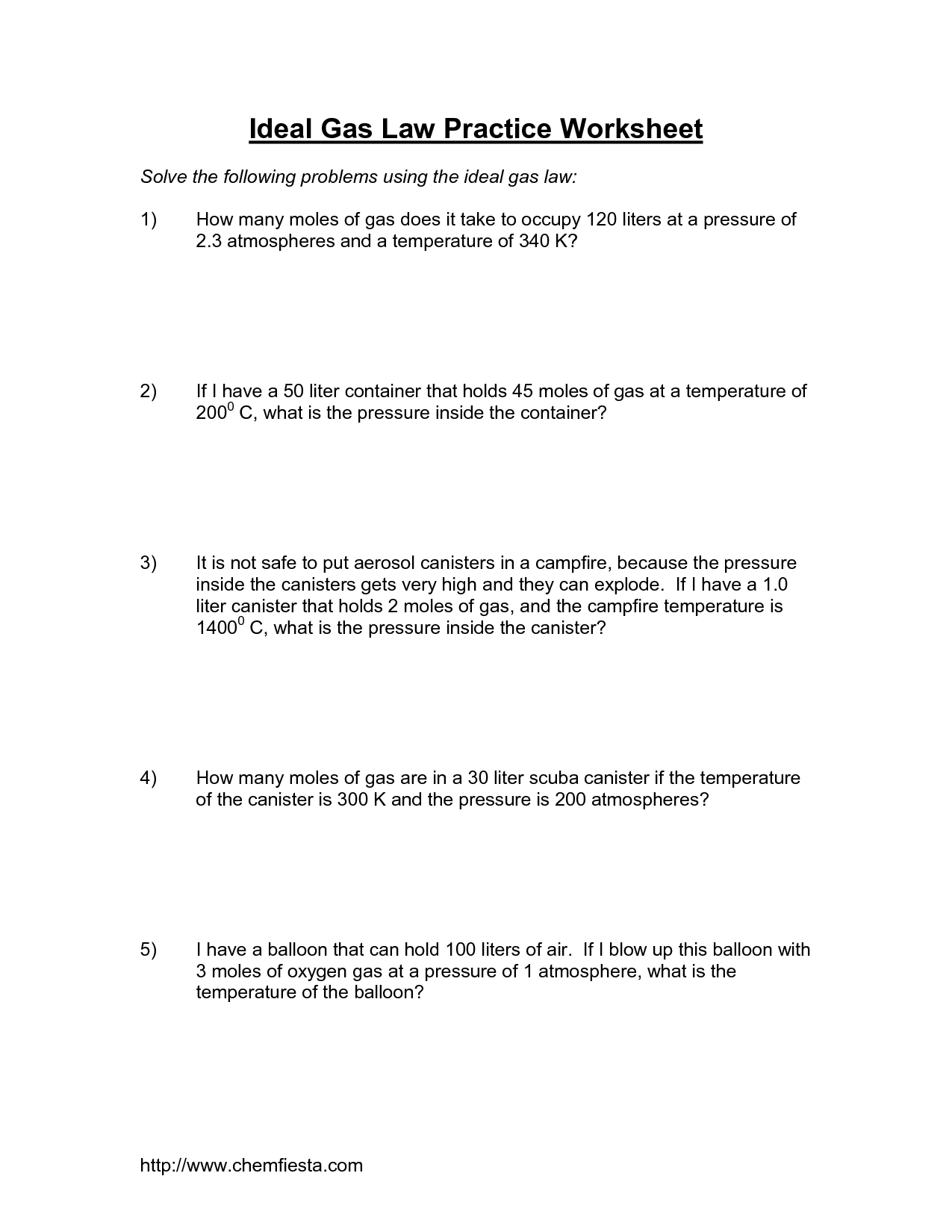
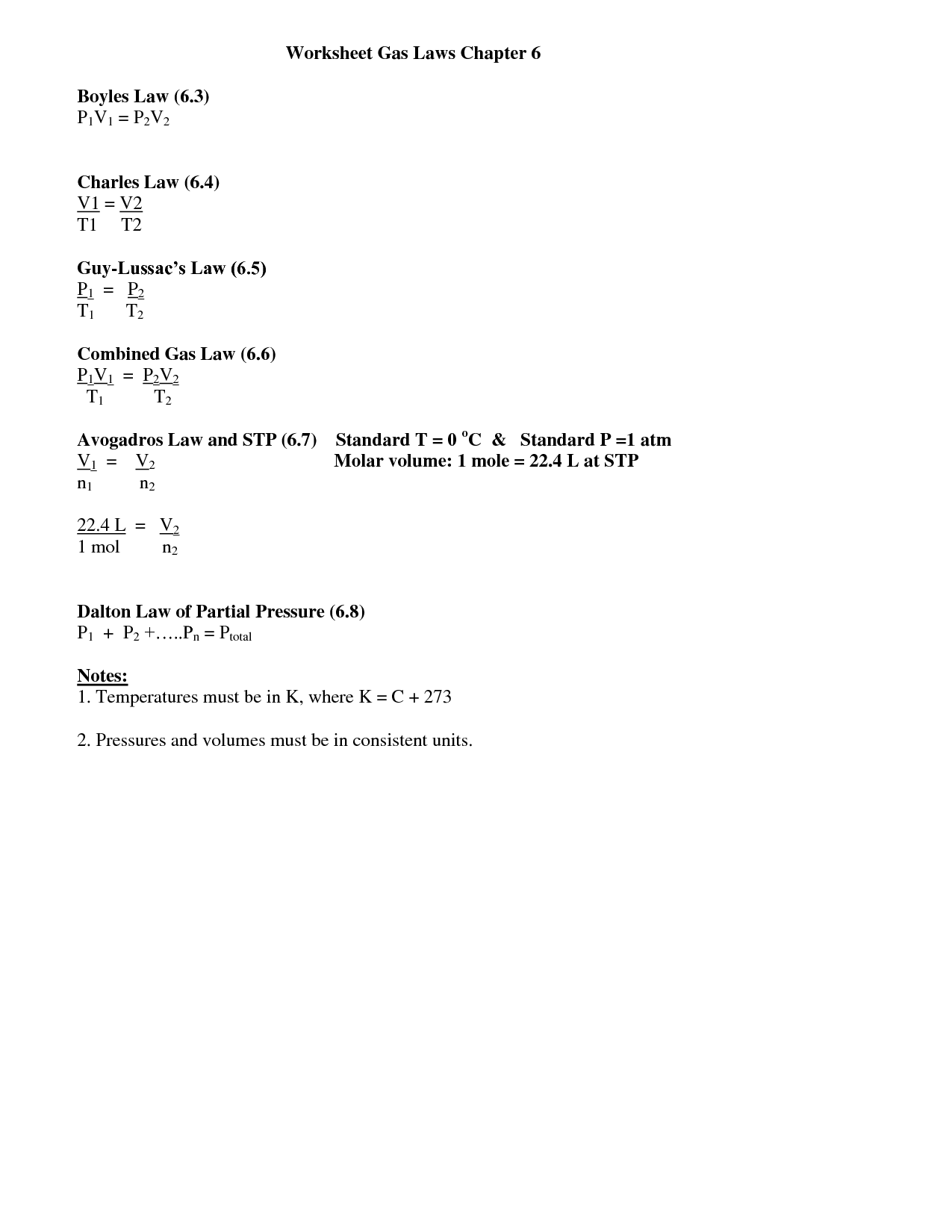














Comments